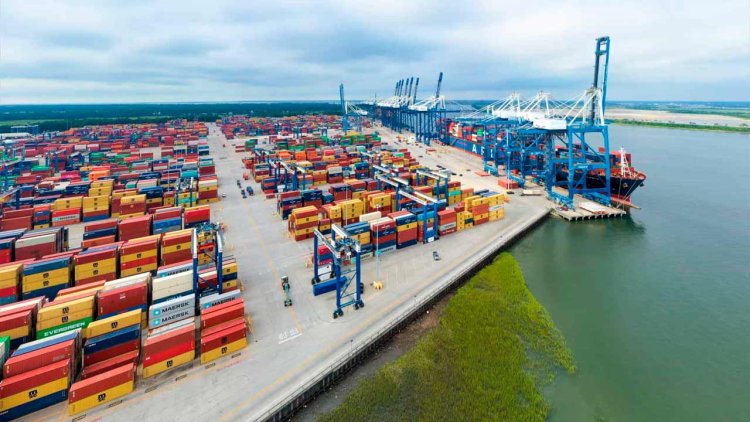SC Ports investing in capacity ahead of demand
South Carolina Ports is making investments in freight infrastructure to support port-dependent businesses throughout the Southeast and beyond.

In the past few months, work has either wrapped or commenced on several of SC Ports’ long-planned infrastructure projects. Smart infrastructure investments bring greater efficiency and capacity to port operations for a more fluid supply chain.
SC Ports’ multiyear effort to modernize Wando Welch Terminal culminated in August with taller cranes, a stronger wharf and an enhanced container yard — all designed to handle the biggest container ships calling on the East Coast.
Also in August, SC Ports launched its new SMART Pool, which will add 13,000 chassis into the Southeast port market through next spring. SC Ports’ new fleet will improve the availability, reliability and quality of chassis for motor carriers, ocean carriers and cargo owners.
SC Ports broke ground on the Navy Base Intermodal Facility in October, thanks to a $400 million investment from the state. This critical infrastructure project will bring near-dock rail to the Port of Charleston and speed goods to market when it opens in 2025.
The expansion of Inland Port Greer hit a big milestone in November with the completed rail expansion. The next phase of construction will double cargo capacity of the container yard, helping to move more goods for manufacturers, automakers, retailers and solar companies.
And earlier this month, SC Ports and the U.S. Army Corps of Engineers, Charleston District celebrated the successful completion of the Charleston Harbor Deepening Project. This 12-year, $580 million project created the deepest harbor on the East Coast.
Charleston Harbor is now 52 feet deep, giving South Carolina a significant competitive advantage. SC Ports seamlessly handles fully loaded mega container ships any time, any tide.
SC Ports President and CEO Barbara Melvin said:
“SC Ports has been able to invest in capacity ahead of demand, which is critical to remaining competitive as a top 10 U.S. container port. These strategic investments are possible because of the strong support we receive from our elected leaders and Board of Directors. We are setting South Carolina up for continued success.”



























